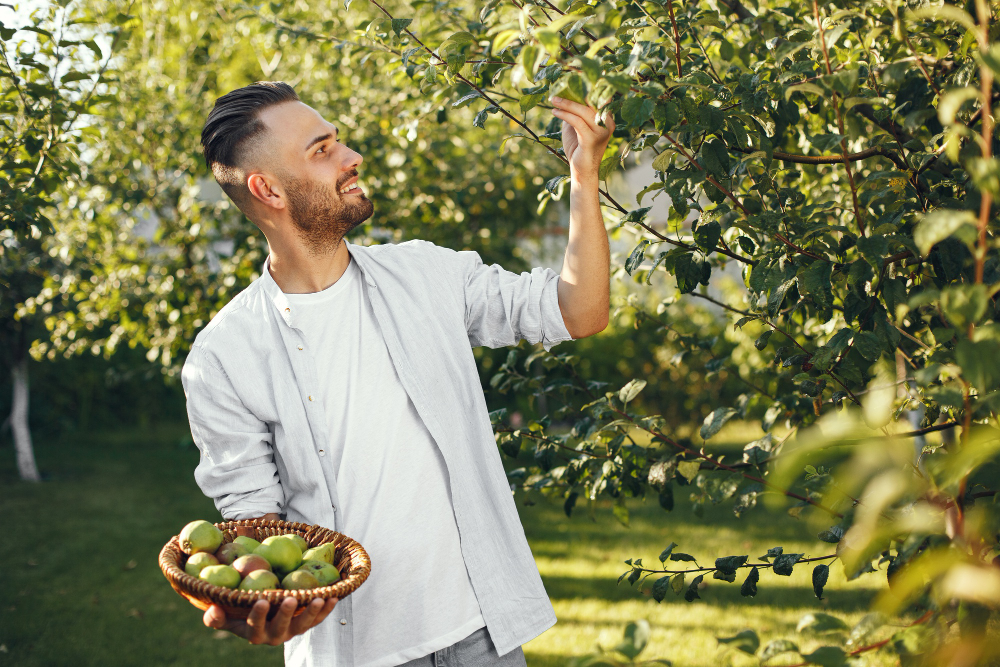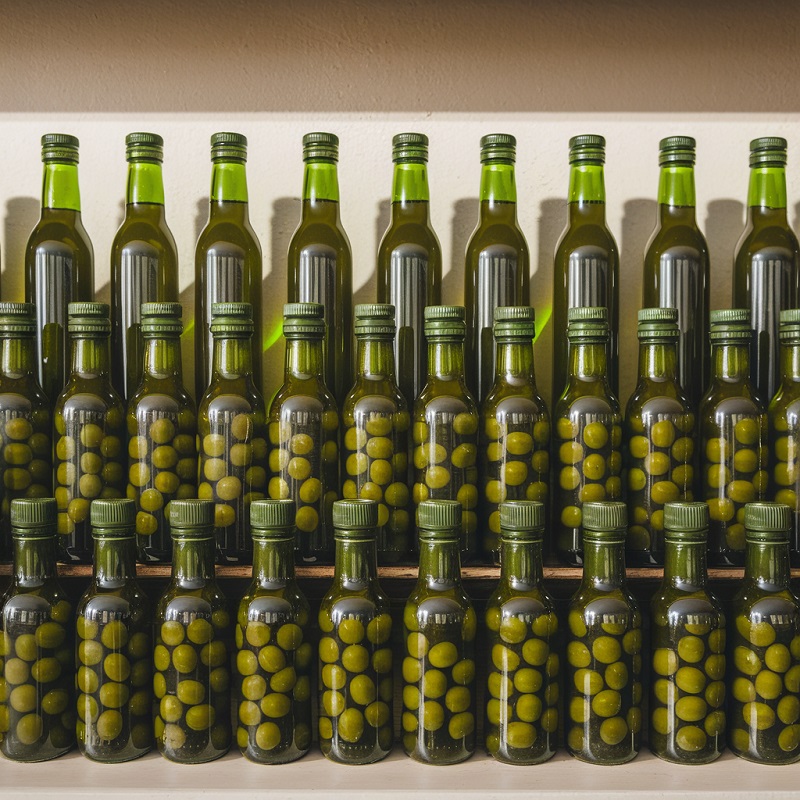Green olives are more than just a food—they’ve been part of kitchens around the world for ages. Why? Their unique flavor and health benefits are hard to resist. From the sunny Mediterranean where they’ve been grown for centuries, all the way to our tables, green olives have a rich story to tell. Let’s walk through that journey—from the farm to your plate.
Where Green Olives Come From
Most green olives come from places with warm, sunny weather, like Spain, Italy, Greece, and Turkey. These countries are known for growing olives because they have the perfect climate: hot summers and mild winters. The trees love this type of weather and grow strong, producing some of the best olives in the world.
Different Types of Green Olives
Not all green olives taste the same. You’ve got some that are mild and nutty, like the Manzanilla olive, which you often see in appetizers. Then there’s the Picholine from France, a bit firmer and slightly tangy. And for a treat, there’s the Castelvetrano from Italy, which is sweet and buttery. Each has its own unique taste, and that’s what makes them so fun to eat.
Growing and Harvesting Olives
Olive trees are tough and can live for a really long time—sometimes hundreds of years! Farmers plant them in well-drained soil where they get lots of sunlight. The trees don’t need much water, but it’s important to manage it carefully, especially in dry areas. To save water, farmers often use drip irrigation, which gives the trees just enough.
Green olives are picked before they turn fully ripe, usually in early fall. Sometimes they’re picked by hand, especially the fancy ones, to keep them looking perfect. Other times, machines shake the trees to knock the olives off—this is quicker and used for large farms.
How Green Olives Become Edible
Freshly picked green olives are super bitter—you wouldn’t want to eat one straight off the tree! So, they need to be cured to get rid of that bitterness. There are a few ways to do this:
- Brine curing: Soaking the olives in saltwater for months.
- Lye curing: A quicker method using lye to reduce bitterness.
- Dry curing: Using salt to cure olives, which often makes them wrinkled.
After they’re cured, olives go through fermentation. This step brings out their full flavor and can take weeks or even months, depending on the method. Once that’s done, they’re ready to be packaged and sent to stores.
How They’re Delivered to Us
Top Green Olive Producing Countries
Spain leads global green olive production, followed by Italy, Greece, and Turkey. Spain alone accounts for a significant portion of the world’s supply, with millions of tons produced annually.
Consumer Demand and Market Trends
The demand for green olives has been steadily increasing, especially in North America and Europe. Organic and gourmet green olives are particularly popular, reflecting consumers’ desire for healthier and higher-quality options.
Top Commercial Manufacturers
Leading brands in the green olive market include Goya, Mezzetta, and Lindsay. These companies dominate supermarket shelves and offer a range of products, from standard pitted olives to stuffed varieties.
Pricing and Availability
The price of green olives varies depending on the variety, origin, and whether they are organic. Prices typically range from $2 to $6 per jar, with higher-end gourmet options fetching premium prices.
User Reviews and Consumer Preferences
Consumers often praise green olives for their taste, with particular appreciation for the buttery flavor of Castelvetrano olives and the briny punch of Manzanilla. Reviews also focus on texture, with users preferring firm, crisp olives over softer ones.
The journey of green olives from farm to table is a fascinating process that highlights both tradition and innovation. From their humble origins in Mediterranean groves to their place on your dinner table, green olives bring a rich history and unique flavor to cuisines worldwide. Whether enjoyed on their own, in salads, or paired with cheeses and wines, they continue to be a beloved ingredient that adds a touch of elegance to any meal.
Why Spain and Italy Are the Best at Olive Production
Ever wonder why Spain and Italy lead the world in olive production? Their perfect weather, rich farming traditions, and deep connection to olives make them top producers. The hot, dry summers and mild winters in both countries create ideal conditions for olives to grow. Plus, people in Spain and Italy have been farming olives for centuries. They’ve passed down techniques from generation to generation, ensuring the olives they produce are top quality.
Ideal Mediterranean Climate
Both Italy and Spain enjoy a Mediterranean climate, which is perfect for growing olives. The key features of this climate are:
- Hot, dry summers and mild, wet winters, essential for olive trees to thrive.
- Well-drained soils with low fertility, particularly limestone-based soils, which promote root development and reduce waterlogging.
- Long growing seasons and abundant sunshine, which help the olives mature properly, providing the rich flavor profiles they are known for.
In Spain, regions like Andalusia and Catalonia have the optimal combination of sunshine and rainfall for large-scale olive farming. In Italy, areas like Tuscany, Sicily, and Puglia benefit from similar conditions, making them major olive-growing regions.
Centuries of Farming Tradition
Olive farming in Italy and Spain has been deeply embedded in agricultural traditions for millennia. Both countries have perfected cultivation techniques over time, leading to the consistent production of high-quality olives.
- Italy’s Tradition: In Italy, olive farming dates back to Ancient Rome, where olives were not only a food source but also a symbol of prosperity and peace. Over the centuries, Italians developed numerous olive varieties that reflect the diverse geography of the country. Terraced farming, common in regions like Tuscany, maximizes land use in hilly areas, enhancing sun exposure for the trees.
- Spain’s Tradition: In Spain, olives have been a staple since the Phoenicians introduced them around 1,000 BC, and the tradition was further enhanced by Roman and later Moorish influence. Spanish farmers have passed down olive-growing techniques from generation to generation, particularly in Andalusia, where families have been cultivating olives for hundreds of years. The methodical pruning and careful selection of varieties ensure that Spanish green olives are consistently high in quality.
Olive Cultivation Culture
In both Italy and Spain, olives are not merely an agricultural product—they are a cultural symbol and a cornerstone of Mediterranean cuisine.
- In Italy, the culture of olive oil and olives is deeply integrated into daily life. Families often own small olive groves, and the annual olive harvest is a time-honored tradition, with entire communities coming together for “la raccolta” (the harvest). Freshly harvested green olives are central to regional Italian dishes, especially in Southern Italy.
- In Spain, olives are equally ingrained in the culture, with olives served as tapas and used in cooking across the country. Festivals celebrating the olive harvest, such as the Fiesta de la Aceituna in Baena, Andalusia, reflect the cultural significance of olives. The Spanish love for olives also extends to their unique methods of curing and processing, which preserve the fruit’s natural flavor while adding their own regional twist.
Rich History of Green Olive Cultivation
The long history of green olive cultivation in Italy and Spain has fostered a wealth of knowledge about the best varieties, harvesting techniques, and processing methods. Here’s a brief look at the historical cultivation of green olives:
- Italy’s History: Olives were cultivated in Italy as early as 800 BC by the Etruscans and later by the Romans, who expanded olive groves across the empire. Roman agriculturalists detailed techniques for olive planting, pruning, and pressing in ancient texts, some of which are still followed today. Italian olive farmers, particularly in regions like Puglia, have carefully maintained ancient groves with trees that are hundreds, and in some cases, thousands of years old.
- Spain’s History: Spain’s green olive history is closely tied to its Moorish past. The Moors introduced advanced irrigation and olive cultivation techniques when they ruled Spain from the 8th to 15th centuries. This period saw a massive expansion of olive cultivation, particularly in Andalusia, which remains the heartland of Spanish olive production today. Spain is home to some of the world’s oldest olive groves, and its farmers still use many traditional techniques while integrating modern technology.
Varieties and Specialization
The diversity of olive varieties grown in Italy and Spain reflects the unique terroirs and climates of these countries. Both nations are known for growing specific varieties that have been refined over centuries to suit their local environments and culinary traditions:
- In Italy, varieties like Nocellara del Belice, Frantoio, and Leccino are prized for their distinct flavors. These olives are used not only for producing olive oil but also for eating as table olives, often cured in brine or seasoned with herbs.
- In Spain, popular green olive varieties include Manzanilla, known for its firm texture and briny flavor, and Gordal, a large, fleshy olive perfect for stuffing. Spain’s reputation for producing stuffed green olives (e.g., with pimientos, anchovies, or garlic) is unmatched, with many exported globally.
Here’s a comparison table of Italy and Spain’s green olive production, export, and economic impact:
| Category | Italy | Spain |
| Total Olive Production | ~2.2 million tons per year (all varieties) | ~6.5 million tons per year (all varieties) |
| Green Olive Production | 10-15% of total production | 25-30% of total production |
| Leading Olive Growing Regions | Puglia, Sicily, Tuscany, Calabria, Lazio | Andalusia, Catalonia, Extremadura, Castile-La Mancha |
| Top Green Olive Varieties | Nocellara del Belice, Castelvetrano, Cerignola | Manzanilla, Gordal, Hojiblanca, Arbequina |
| Harvest Season | September to November | October to December |
| Curing & Processing Methods | Brine curing, dry curing, fermented, oil-cured | Brine curing, lye curing, fermented, stuffed |
| Main Uses | Table olives, olive oil | Table olives, olive oil |
| Export Volume (Green Olives) | ~50,000 tons annually | ~600,000 tons annually |
| Top Export Markets | USA, Germany, France, Canada | USA, France, UK, Italy |
| Olive Oil Contribution to Economy | ~€2 billion annually | ~€4 billion annually |
| Cultural Importance | Integral to Mediterranean cuisine, part of Italian heritage and traditional farming practices | Central to Spanish culture, featured in daily meals, olive festivals, and tapas culture |
| Sustainable Practices | Growing focus on organic and sustainable farming, low pesticide use | Large-scale shift toward organic farming, water-efficient irrigation |
| Challenges | Aging groves, climate change, labor costs | Water scarcity, price competition, international demand fluctuations |
Key Insights from the Comparison:
- Spain dominates global green olive production, accounting for a significant portion of international exports. It produces and exports more green olives than Italy, supported by its massive production in regions like Andalusia.
- Italy is known for its high-quality, gourmet olive varieties, such as Castelvetrano, which are favored for their unique flavors and culinary uses, although its production volume is lower.
- Both countries prioritize sustainable practices, with increasing focus on organic farming, water-efficient technologies, and eco-friendly cultivation to meet growing international demand.
Italy and Spain’s leading positions as green olive producers are due to a combination of climate, historical cultivation practices, and cultural significance. Their expertise in olive farming, passed down through generations, allows them to produce a wide range of green olives that are prized for their quality and flavor. With a deep connection to their agricultural traditions and a focus on both heritage and innovation, these two Mediterranean countries will continue to dominate the global green olive market for years to come.
From Tradition to Table
In both countries, olives aren’t just a crop—they’re part of the culture. In Italy, families with olive groves often gather for the annual harvest, which is a big community event. In Spain, olives are celebrated at festivals, and they’re also a common part of tapas meals. These long-standing traditions make the olives from these regions even more special.
Variety and Specialization
Both Italy and Spain grow a variety of olives that have been perfected over time. Italy is known for types like the Nocellara del Belice, which has a strong, bold flavor. Spain’s Manzanilla olives are famous for their briny, firm texture, often found in stuffed olives. Each country has its own methods of curing and preparing these olives, which makes each bite different and exciting.
What Makes Green Olives So Great to Eat?
Green olives aren’t just tasty—they’re good for you! They’re packed with healthy fats, antioxidants, and vitamins, making them a great addition to meals. Whether you’re adding them to salads, eating them with cheese, or just snacking on them straight out of the jar, they’re versatile and full of flavor.
The journey of green olives—from sunny farms in the Mediterranean to our plates—is pretty amazing. These little fruits have a long history and are loved around the world. With their delicious flavor, health benefits, and cultural significance, green olives are here to stay, bringing a little taste of tradition to every meal.
Health benefit of Green Olives
Green olives offer several health benefits that make them a nutritious addition to your diet. Here are some of the key benefits:
1. Rich in Healthy Fats
Green olives are packed with monounsaturated fats, especially oleic acid, which is known to improve heart health. These good fats can help lower bad cholesterol (LDL) and raise good cholesterol (HDL), reducing the risk of heart disease.
2. Loaded with Antioxidants
Olives contain powerful antioxidants, like vitamin E and polyphenols, which help fight free radicals in the body. These antioxidants reduce inflammation, protect cells from damage, and may lower the risk of chronic diseases such as cancer.
3. Supports Heart Health
By improving cholesterol levels and reducing blood pressure, the compounds in green olives contribute to better heart health. The healthy fats and antioxidants can also lower the risk of atherosclerosis, which is the buildup of fatty deposits in the arteries.
4. Good for Digestion
Green olives are rich in fiber, which aids digestion and helps prevent constipation. They can support a healthy gut by encouraging regular bowel movements and feeding beneficial gut bacteria.
5. Boosts Immune System
The high vitamin E content in green olives is essential for a strong immune system. This vitamin helps protect cells from oxidative stress and boosts the body’s ability to fight off infections.
6. Supports Bone Health
Green olives contain small amounts of calcium and polyphenols that contribute to stronger bones. Additionally, the anti-inflammatory effects of olives may help in preventing bone diseases like osteoporosis as you age.
7. May Reduce Cancer Risk
The antioxidants and anti-inflammatory compounds in green olives help reduce the risk of certain cancers by fighting oxidative stress and chronic inflammation, both of which are linked to cancer development.
8. Promotes Skin Health
Thanks to vitamin E and other antioxidants, green olives can improve skin health by protecting it from premature aging caused by sun damage and pollution. The healthy fats also nourish the skin, keeping it soft and hydrated.
9. Aids in Weight Management
Despite being rich in fats, green olives can help with weight management because the healthy fats and fiber make you feel full longer, reducing the urge to snack on unhealthy foods.
10. Helps Control Blood Sugar
The monounsaturated fats in green olives may improve insulin sensitivity, which is important for controlling blood sugar levels. This benefit is especially helpful for people with or at risk of type 2 diabetes.
Green olives are not only a tasty addition to many dishes but also offer numerous health benefits. From heart health to better digestion and glowing skin, they’re a small but mighty superfood worth including in your diet.





